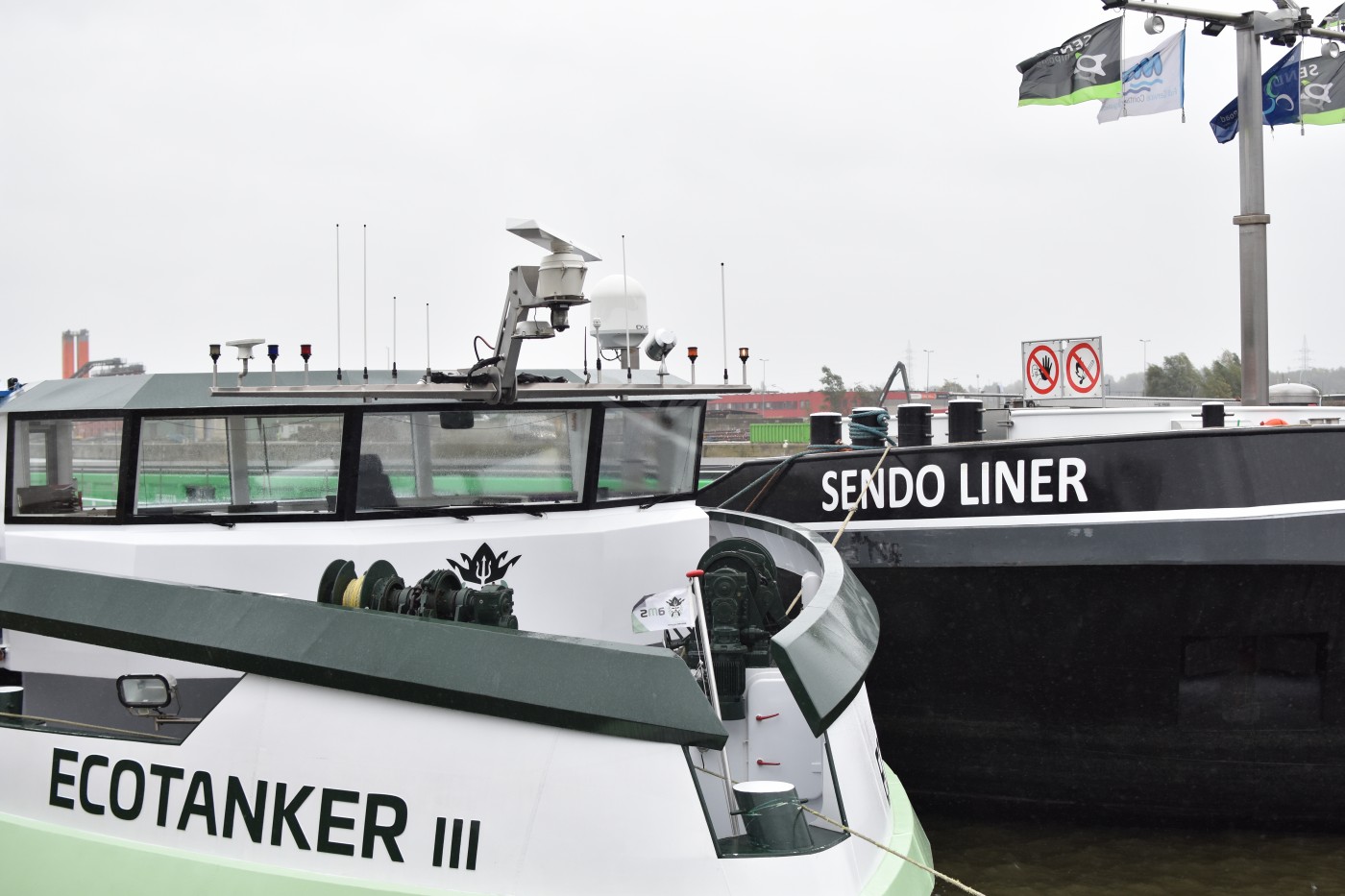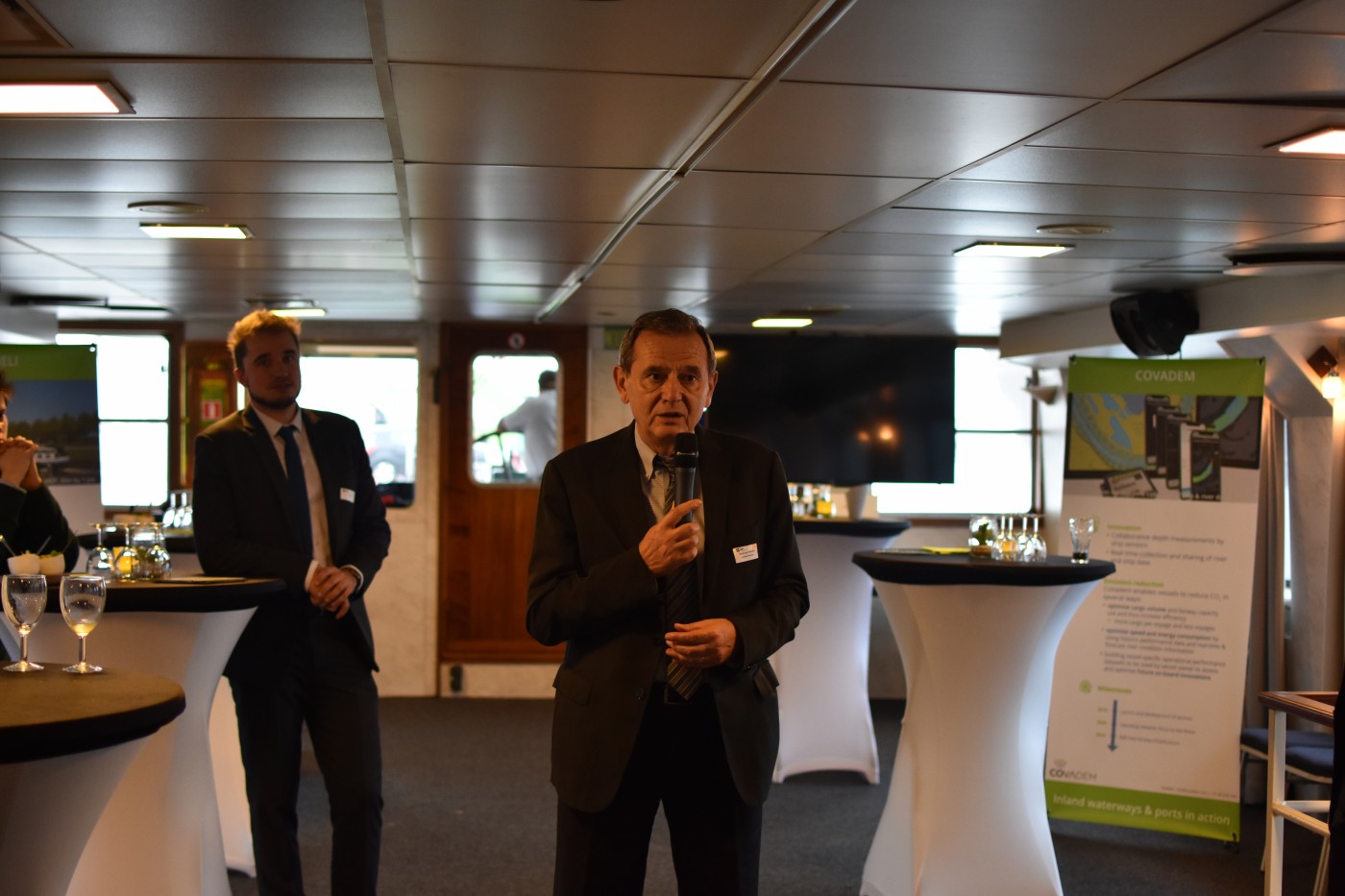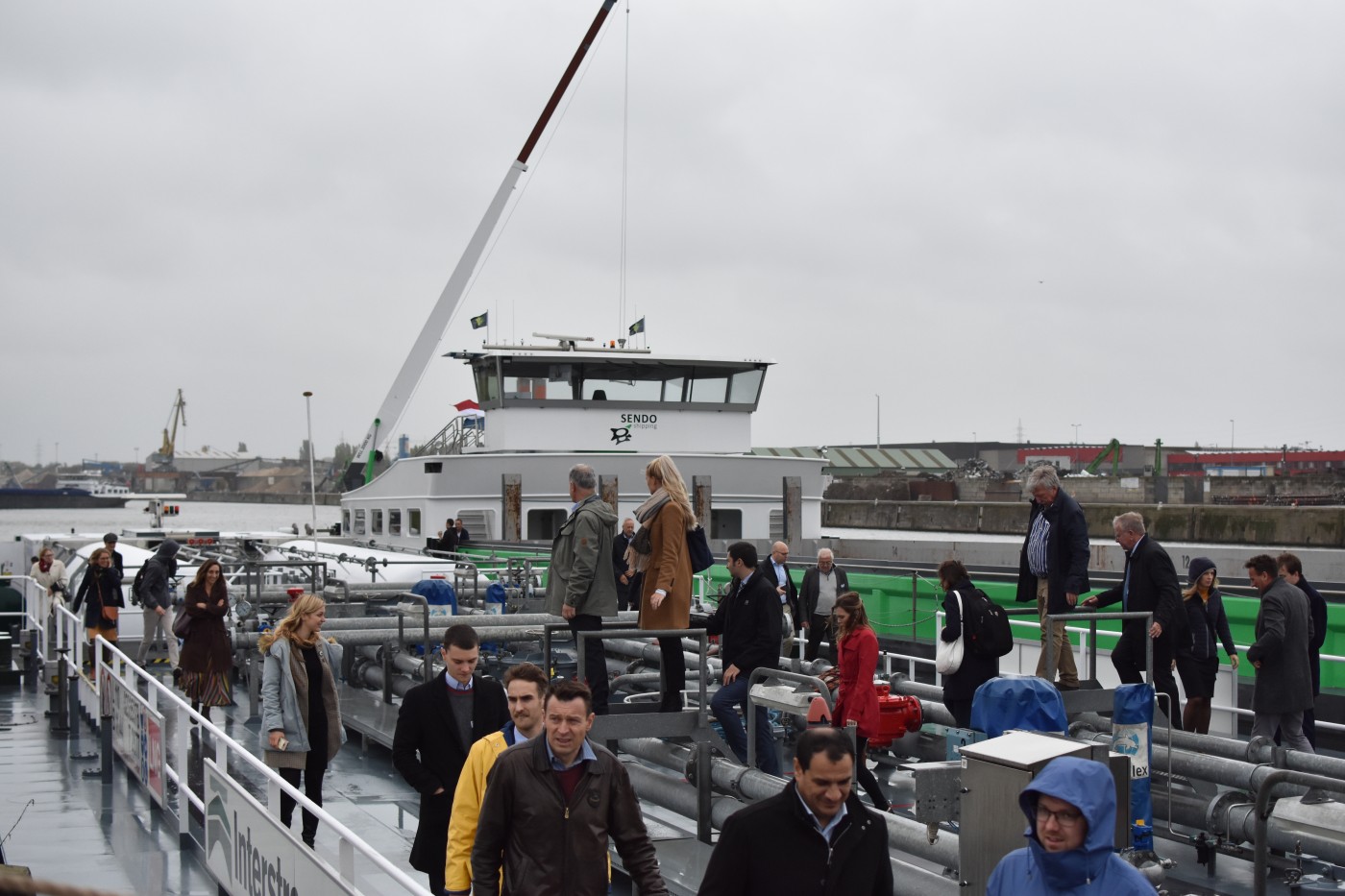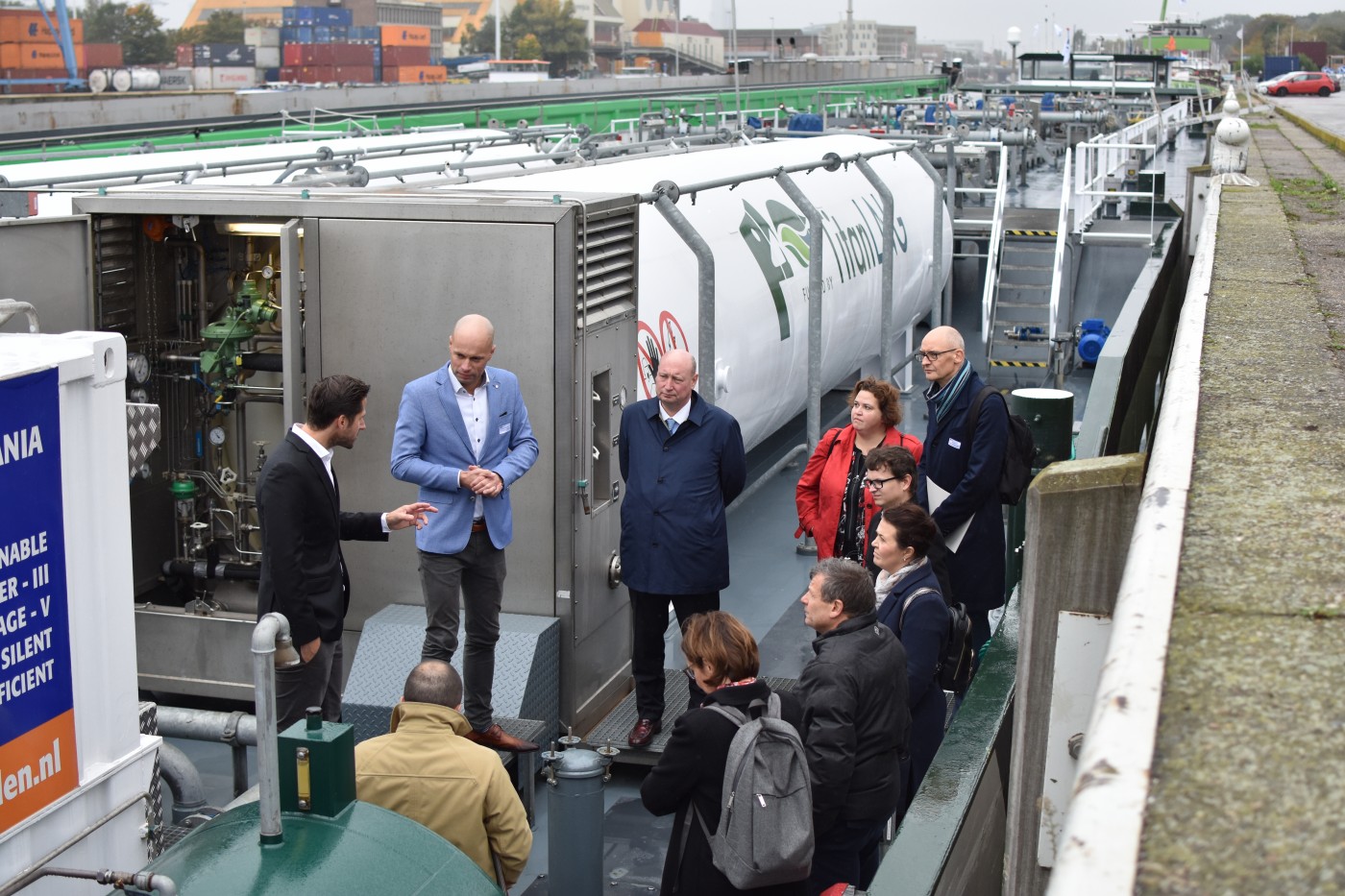Green Inland Shipping event 16 October 2019 showed the most innovative solutions in inland navigation at the CO2 neutral Port of Brussels
Press Releases
17 October 2019
Five very innovative vessels called at the port of Brussels to show technological solutions to cut CO2 and air emissions to a minimum to European decision makers and stakeholders. They include zero-emission technologies such as battery-electric, gas-electric, ultra clean biofuel drivetrains and hydrogen.

Inland shipping, smart and sustainable
Inland waterway transport is known for its sustainable record. Moving forward to further improve its performance, it aims to reach an emission reduction of more than 50% by 2030 and to sail zero-emission by 2050 offering climate neutral and zero-pollution mobility.
Inland ports, as enablers of green logistics, are supporting this transition by rolling out alternative fuels infrastructure and market measures. As hubs, inland ports envision connecting climate friendly inland shipping with other sustainable transport modes and logistical solutions.
By doing so, the sector strives to substantially increase its share. Sustainable and innovative inland shipping will play a predominant role in smart and sustainable transport.
Apart from these goals for the long distance, inland shipping and ports play an increasing role in urban mobility. An initiative of an electric ship for urban delivery of parcels was presented in combination with cargo bikes, completing the last mile. Other innovative solutions demonstrated were unmanned shipping remotely controlled from shore and a pilot with fuel cell/hydrogen technology for zero-emission container shipping.
The potential of inland shipping and ports to help realise the EU agenda
High-ranking representatives of the European Commission, Council and Parliament were guided around on the five vessels and could witness the innovative solutions in the sector. They took note of the significant modal shift potential of inland navigation and the sector’s ongoing work to reach the sustainability goals of the European Union.
Against the background of the recently released Agenda for Europe “A Union that strives for more: My Agenda” of the new Commission President Ursula von der Leyen which lays down a European strategic long-term vision, inland waterway transport offers quality solutions to keep path with the ambitious decarbonisation challenges.
Annual congestion costs reach 1% EU GDP and the GHG emission share of transport continues to rise instead of decreasing. With over 40,000 km of navigable waterways and 250 inland ports, inland waterway transport carries some 560 million tonnes of goods per year and is of increasing importance in the field of cruising and passenger transport. Already today, major industries in Europe are depending on a seamless supply of their goods via waterways. It keeps business and trade up and running, enables the completion of the internal market, and enhances tourism. Contrary to the congested roads, European waterways still dispose of free capacity, offering a significant modal shift potential. Therefore, fostering clean and reliable transport solutions by waterway transport and inland ports can enable more economic growth in Europe’s waterborne regions and increase prosperity and quality of life.

Innovative vessels
- Sendo Liner: battery/diesel – electric powertrain, containervessel, size: 110m*11.45m
This is the first commercial freight vessel in IWT able to navigate ‘zero-emission’ on the charged battery on board. It can sail up to 3h on electricity, aiming to avoid any emissions in populated areas such as cities and their ports. The design of the vessel is optimised for a dedicated route, which increases the efficiency (more cargo capacity, less energy consumption).
- Ecotanker III: gas-electric powertrain, tankervessel, size: 110m*11.4m
This state-of-the-art tanker has a clean LNG propelled mono-fuel engines with electric motors and bowthrusters. It has a typical configuration as the steering house is in the front. The reduction of NOx emissions is 90% while emissions of particulate matter (PM) emissions is negligible. When running on Bio-LNG in future, this vessel can be carbon-neutral as well.
- Motorvessel Wantij: clean Euro VI combustion engine, dry cargo vessel, size: 86m*9m.
This is the first commercial freight vessel for which Euro VI truck engines were marinized. It is a relatively low cost retrofit solution for a large share of the existing fleet to achieve >95% reduction of air pollutant emissions. It also saves fuel consumption and therefore CO2 emissions. Carbon neutral performance can be achieved by usage of drop-in biofuels/HVO or synthetic fuels.
- Motorvessel Emeli: fuel cell hydrogen and diesel-electric propulsion, crew training vessel, size 55m*7.2m
The original cargo vessel from 1961 is used by the Maritime Academy Harlingen to educate/train new staff for IWT. It is retrofitted with a diesel-electric powertrain. The big innovation is the Fuel Cell and Hydrogen storage system (12 KG, 200 bar) which was recently installed on board of the vessel. The system can produce 30kW of electric power for a duration of 10 hours.
- Hydroville: passenger vessel, size 14m*4.2m
This is one of the first inland vessels to use hydrogen as fuel by means of a combustion engine, mixing it with diesel. The reduction of CO2 and NOx emissions amounts 70% at a sailing speed of 11 knots. The vessel is a sailing laboratory to test new hydrogen technologies and is a demonstration vessel to raise awareness and inform. It serves as a shuttle service for CMB staff to avoid traffic jams.
You can find attached the press release from the Port of Brussels in French and Dutch.

